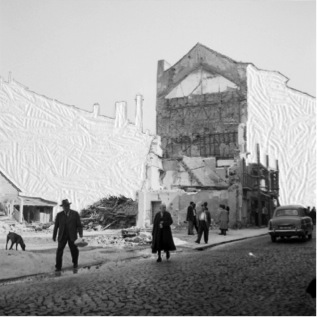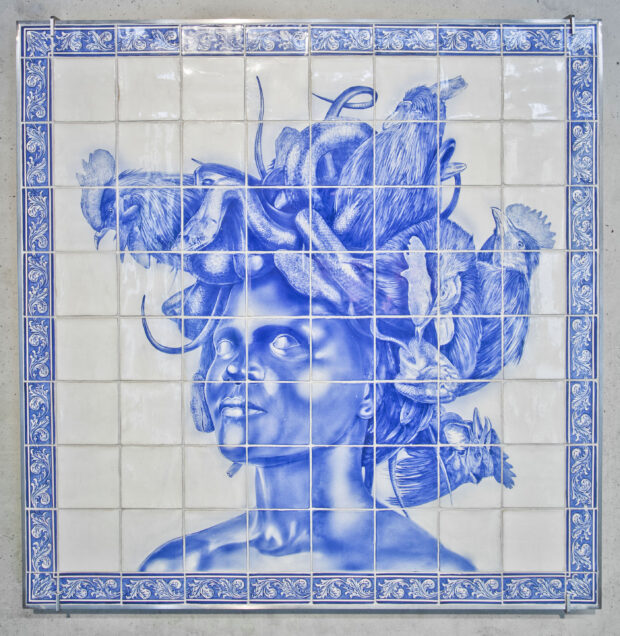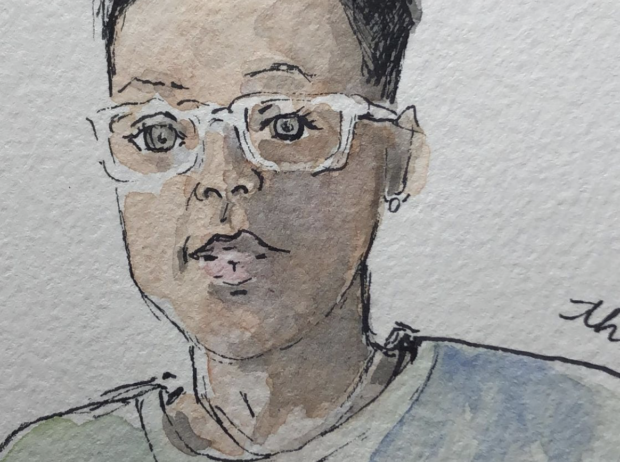This past weekend, photography fans and connoisseurs descended upon the Grand Palais for the 18th annual Paris Photo Fair. Held November 13-16, 2014, it boasted 143 galleries and twenty-six art booksellers representing thirty-five countries. Grandiose and historically rich, the venue provided ideal conditions for viewing photographs: the sprawling dome of the Grand Palais offered abundant natural light, while the tightly-packed booths were simple, cut-to-the-chase affairs, with off-white walls.
The upper level of the Grand Palais functioned as a non-commercial gallery space for recent acquisitions from the Museum of Modern Art as well as for the Alkazi Foundation for the Arts’ collection of early Indian and South Asian photography. Smaller wings displayed works sponsored by Giorgio Armani, JP Morgan Chase, and BMW. These spaces, located at the top of a grand staircase and away from the bustling ground floor, subtly linked the works on sale at Paris Photo with private, museum-quality collections, and underscored the potential for these photographs to act as investment pieces.
The beating heart of the fair was a social space at the base of the grand staircase, which was continually abuzz with visitors flipping through art tomes and awaiting artists’ signatures. Ample opportunity to encounter the artists themselves contributed to the sense that Paris Photo not only stimulates monetary transactions, but also the transaction of knowledge between enthusiasts and a shared passion for the medium.

One present artist was the soft-spoken Senegalese photographer Omar Victor Diop. While mingling with visitors, he explained that his most recent series of self-portraits, Project Diaspora, renews awareness of marginalized African figures in European history while commenting on contemporary issues of immigration. Using compositions taken from 15th-19th century paintings, Diop inserts anachronistic details from the regalia of a commercialized and sensationalized soccer industry, suggesting that the struggles facing travelers from Africa centuries ago are strikingly similar to those faced in the present day.
After weaving deeper into the fair, it was satisfying to discover fresh work from established figures, particularly those not typically associated with photography, such as Kiki Smith. Just as inspiring were the rows of displays punctuated by unexpectedly bold, monumental works by unfamiliar artists. Across the variety of works I recognized a captivation with the accumulation of images: artists experimented with different materials, played with the visibility of seams in collage, creatively aligned works in series, layered images, light, and materials to express the passage of time and motion, and stitched together imagined but believable land- and city-scapes.

Despite the array of works on view at this year’s Paris Photo, edginess and radical experimentation were largely absent (perhaps a result of a European audience seeking mostly masterworks of photography in the traditional sense). Only a handful of booths showed works that incorporated other media or the moving image, or that explored multi-dimensional photography, such as that of Portuguese artist Carla Cabanas. Cabanas mounted 20th-century images of Lisbon’s Martim Moniz Square in various stages of demolition or construction onto foam core. She then carved away selected areas of the image, leaving an uneven, chaotic appearance on the image surface while preserving the carvings that came to rest in the base of the frame. The inclusion of Cabanas’ work points to new, exciting, and less-conventional paths for Paris Photo, and it would have been more interesting to see the fair use its position at the forefront of its field to expand or question definitions of photography. Doing so would have added yet another layer of richness to the experience and signaled the fair’s willingness to update its showings to fit more expansive notions of what constitutes photography in the twenty-first century.






Be First to Comment